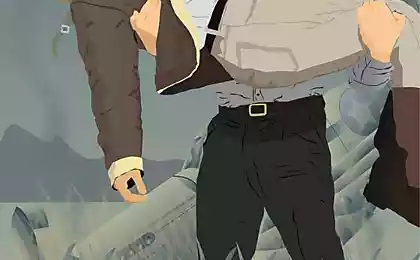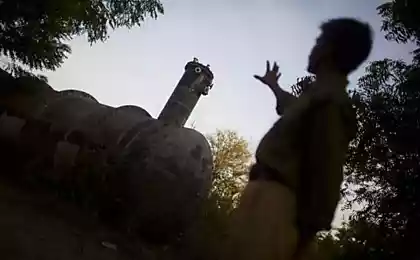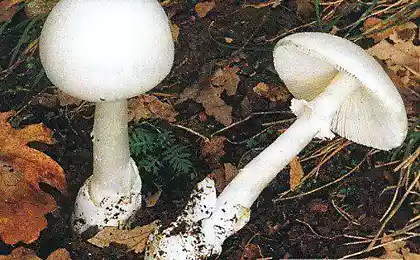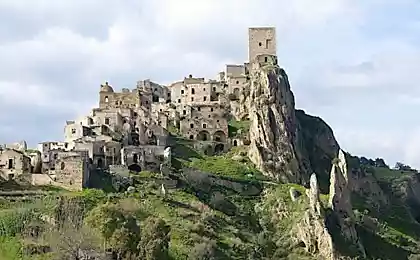1535
Surviving, in spite of everything
Being trapped in an emergency, be at the mercy of nature, be isolated from society - it means to experience a primal fear that everyone is born with the idea that we are helpless without civilization. The truth is that none of us really do not know how he would have led themselves in a similar situation.
11 photo.
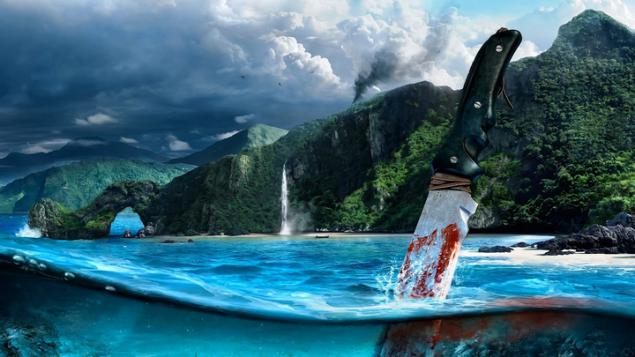
10. Robert McLaren removed his appendix in the jungle.
In 1942, Robert "Jock" McLaren escaped from a POW camp in Singapore, fought for a few weeks with the local guerrillas, but was betrayed by a comrade and interned in a strict-regime camps in Borneo.
McLaren during the First World War was still a minor, but it took the cavalry. After the war, he emigrated to Australia and started a quiet life in Queensland. When World War II began, the middle-aged vet was one of the first who volunteered. Captured by the Japanese after the fall of Malaya, McLaren organized his first escape from the infamous Changi Prison (Changi) in Singapore. His return, after the betrayal of his partner, has not changed his intention to run. He teamed up with a man equally determined to escape - local Chinese who McClaren named Johnny Funk, Funk had nothing to lose, as he has repeatedly been subjected to severe torture in Japanese captivity.
Together Jock Johnny escaped from prison and went to the coast. They move from island to island, breaking the 430 kilometers of the Pacific, fighting on the road with the Japanese before landed on the Philippine island of Mindanao. Unfortunately, the island is already captured by the Japanese. And McLaren inflamed appendicitis.
Pursued by Japanese and not being able to get to a doctor, McLaren took the desperate decision. He had a mirror, a sharp pocket knife and vines from the jungle to sew up the wound and absolutely no anesthetic. He had no choice, he had to make a transaction.
The operation took four and a half hours. Several years later, during the presentation of medals for bravery, McLaren asked about the operation. His response was quite brief. "It was horrible," - he said - "but I did all right».
Two days after the operation, McLaren was on his feet again, running away from the Japanese. He spent the remainder of the war as a partisan in the Philippines, commanding huge old boat called "Bastard." He filled mortars and machine guns boat and used it to attack the Japanese ports, and then ran away before anyone had time to understand what happened. Despite the huge reward that was given for his head, he was never caught, probably because everyone was scared of the notorious rebel leader, and deliver him was definitely a death sentence.
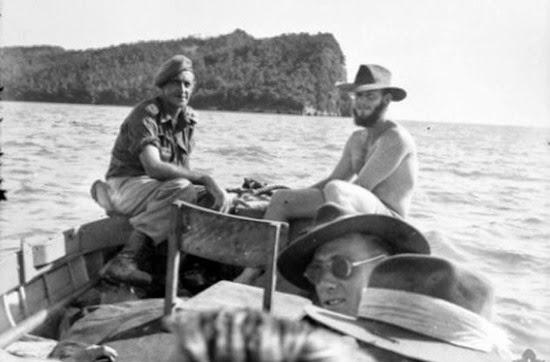
9. Doug Scott came down from the mountain on broken legs.
One of the true legends of mountaineering, Doug Scott has made survival impossible conditions in the form of art. In 1975, for example, he and Dugel Heston became the first people who spent the night almost on top of Everest. Everything else, they did it by accident after their ascent took longer than they expected. As a result, by the time it got dark, they had no tents and oxygen and only very light clothing. At night the temperature dropped to -30 degrees Celsius, and Scott and Heston survived, digging a hole in the snow. They have not even got frostbite.
But even that pales in comparison to the incredible descent Scott infamous Pakistani mountain called "Cannibal". In 1977, nearly 25 years after the first conquest of Everest, it appears that no one has yet been able to reach the Pakistani rocky peak at intimidating name of "Maneater". Scott was convinced that he will be the first. The expedition, which he led, was so strapped for cash that they had to hire a guide with disabilities. Nevertheless, on July 13, Scott and his partner Chris Bonington climbed the 250-meter cliff top, which stood at the peak of the Ogre.
Since it was late, they decided to speed up and down on a rope with a rock face. It was a bad decision. When Scott tried to descend on a rope down, a sudden gust of wind hit him on the cliff and broke both his legs. Since there were only broken tibia, Scott was able to get down on the rope rest of the way, using his knees to push off from the cliff.
Fortunately, the pair were soon joined by two other members of the expedition. Unfortunately, they were still at a distance of more than 2000 meters from their base camp. And then a blizzard forced them to hide in a cave for two days, where they ate the last reserves of food. Since mountain landscape deprived of other climbers carry Scott opportunities (especially after Bonington broke two ribs in the fall), he realized that there was only one way to survive - on their own to crawl down the mountain.
He was coming down with one of the highest mountains in the world in seven days, using only his hands and knees. He wiped the four layers of clothing, and his knees were like a bloody mess. He did all this with two broken legs and being hungry, but he was still moving so fast that sometimes overtook the others.
When four climbers reached the territory of their camp, they found it empty - they had not been so long that their team is to assume that they were killed. Scott sent for medical treatment. The helicopter crashed near the hospital, but no surprise that Scott did not get a scratch.
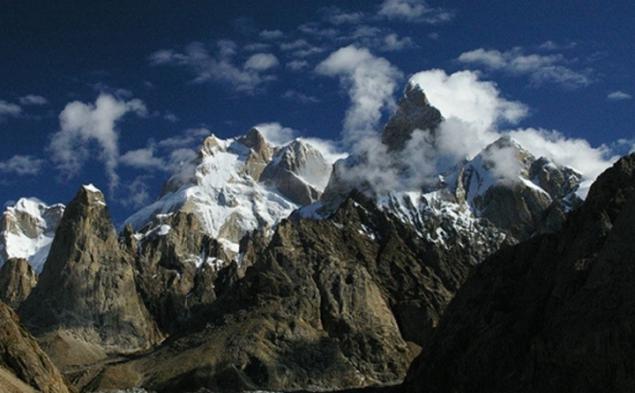
8. Gareth Wood fought with seals in Antarctica.
In 1984, Gareth Wood, Robert Swan and Roger Mir went to the South Pole. They sought to repeat the famous journey to the Pole Robert Falcon Scott. Given that the whole expedition Scott died of starvation, exhaustion and cold on the way back from the pole, it seemed rather odd decision. In addition, only two previous expedition reached the pole on land - Scott and his rival Roald Amundsen.
It is surprising that the journey passed without problems until it was time to go home, that's when the ship collided with the support of lots of ice and could not get to the expedition. The team had to be rescued from ice floes. The ice was quite thin in some places, but it was the lesser of the problems.
Wood later told me that the ice surface at some point if exploded, and a huge seal jaw batted around his feet and began to try and tighten it in ice water through a hole in the ice. Only a layer of ice stood between life and death. Somehow he managed to resist until his companions had not come and started kicking the seal on the head. More seal long refused to release its prey, until defeated, not fallen through the ice. Wood comrades dragged from the edge, but it was not the end ...
Seal again jumped out from under the ice, sank his teeth into the same leg, and it all started again.
Wood can consider yourself lucky, because in the end he still was able to get away from the seal. A similar incident was repeated in 2003, when the seal was trying to tighten the British biologist under water. This is the first, after Wood recorded instance attempts seal kill a man.
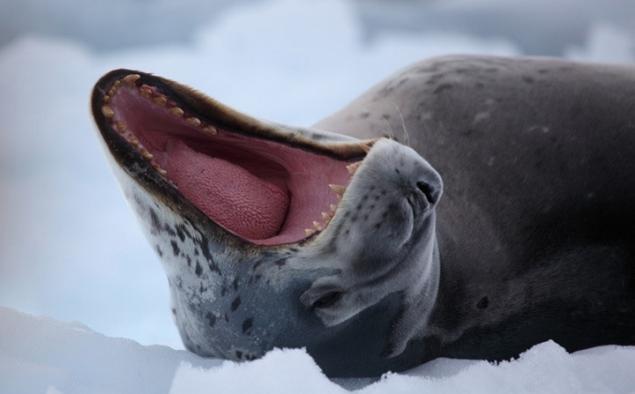
7. British climber sailed through the avalanche.
In early 2013 three British amateur climber to enjoy the journey to the famous Mont Blanc in the Italian Alps. Mont Blanc is known for its frequent avalanches that make a mountain one of the most deadly in the world - 100 climbers and hikers die on it every year. When the three Britons down the Aiguille di Bionnassay, behind me they heard the roar of impending doom.
Two climbers, Misha Gopaula and Ben Tibbetts, managed to get to a safe place. But the third climber, who asked that the media not to be named, was hit by a wave of snow and ice. Desperate, the climber did the only thing that came into his head - he swam.
More than 700 meters he swam in an avalanche while she carried him down the mountainside. Of course, it is technically impossible to swim in the snow, but broad, circular motion to keep him on the surface. When the avalanche stopped, he was able to get out from under the snow without help and get to a safe place.
He sailed through the avalanche and left without a scratch, but his modesty does not allow us to know the name of this hero.
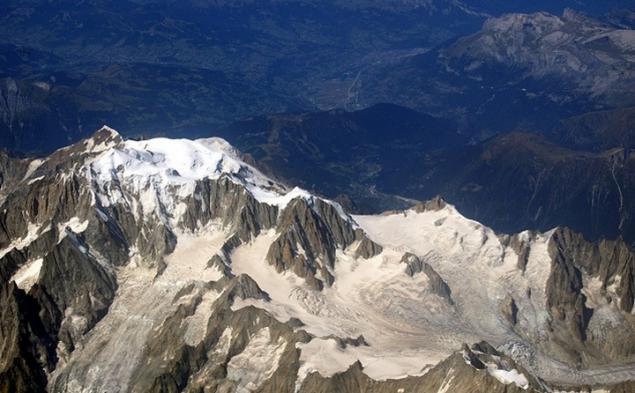
6. Stuck Emile Leray built a motorcycle from his car.
In 1993, a French adventurer Emile Leray traveled the Sahara on your car Citroen 2CV, when he was stopped at a military checkpoint. Soldiers told Leray about battles in the area and did not allow him to continue his journey. If you think so, it is initially clear that the person who decided to go to the Sahara on small cars are not very friendly with the head, and therefore Leray, ignoring military advice, decided to go further.
To get around the checkpoint, he just left the road and drove through the desert with the intention of returning to the newcomers part where the soldiers could not see it. The plan may be triggered if Citroen ran into a stone that turned the car into a useless pile of metal. One middle of the desert, without transport and method to call for help, Leray was trapped his confidence.
But Leray, examining his car, discovered that his engine is still running. And he decided that if he can not use it to restore Citroen to life, he must build something that could save his life. So Emile Leray decided to build a bike from his crashed car.
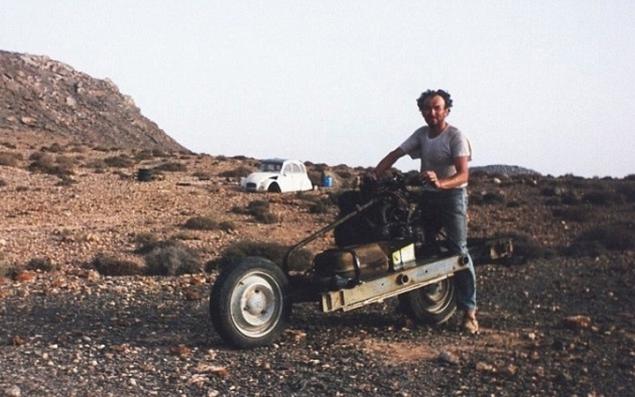
In any case, it is more complicated than it seems at first glance. Leray was only a standard set of automotive tools and hacksaw. He began to disassemble the Citroen and create parts of the motorcycle. It took him 12 days of constant work at high temperature of the Sahara, 12 days of desperate fear, uncertainty and thirst, but eventually Emile Leray left the desert on a motorcycle, which he built himself.
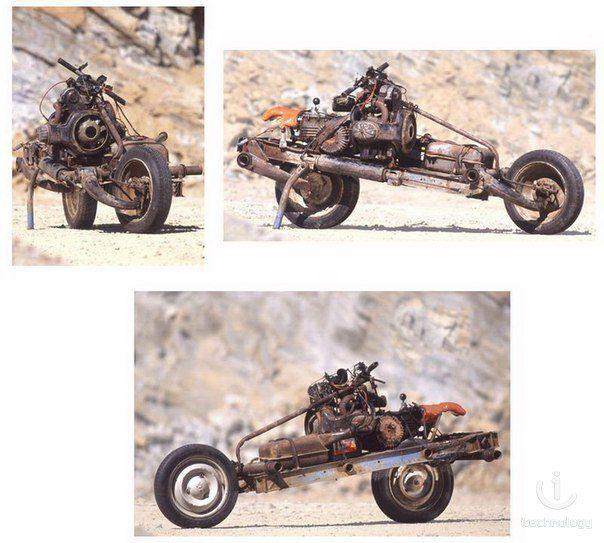
5. Du Plessis Davey escaped mugging on Amazon.
In 2012, 24-year-old South African Davy du Plessis was in a six-month trip to the Amazon. His goal was to become the youngest person to travel to alone along the river from its source to the sea. Du Plessis knew it could be a dangerous journey: he had never sailed on a folding kayak, but the first three months have been pretty good. Du Plessis biked 800 kilometers along the river and swam to the kayak has 1,100 km.
August 25 du Plessis has floated down the river, when he saw the first manatee. River dolphins frolicking near the kayak. A little later, he met two men in a motorized canoe, but did not attach much importance. These meetings were very common on the river. A few minutes later he felt a stab in the back, acute pain and was under water. When he tried to swim to the surface, he found that his hands do not work.
Desperate for air, he used his legs to emerge, but as soon as his head emerged from the water, he felt a blow in the face. He managed to get out on the river. Then in the third bullet hit him, and he realized that someone shoots him.
Anyway du Plessis found strength to escape. He ran 5 kilometers through the jungle until he was safe. Then he walked a few kilometers down the river in hopes of finding help. All his property along with kayak was lost.
When he finally saw two local residents, he was too weak to even whistle, drawing attention to himself. The bullets hit his heart and hit the lungs. His carotid artery was almost completely severed, and he almost choked with their own blood.
Poor locals could not afford to take him to the closest town, so he moved from village to village, stubbornly clinging to life for days. When he finally got to the hospital, the doctors refused to examine him until his family was not able to confirm that they can pay. But du Plessis said the kindness of local residents, he encountered on Amazon, gave him the strength to survive and fully recover.
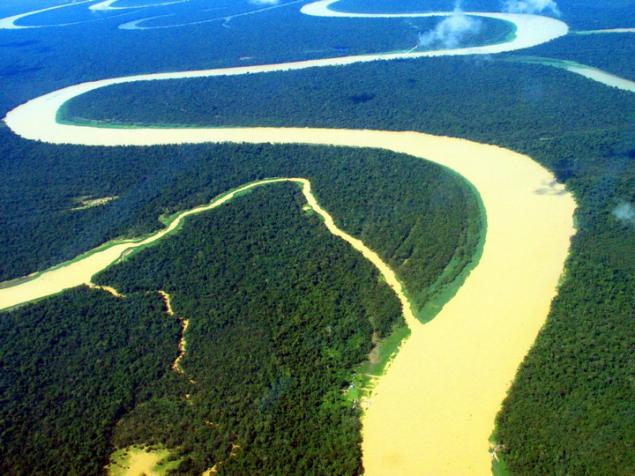
4. Peter Treyhern is the unluckiest and the luckiest man alive.
In 2006, Peter and his partner Treyhern dive Tozio Jeff jumped out of the boat at the rock Pimpernel. Toothed underwater spire was home to dozens of giant gray sharks. Treyhern was keen underwater photographer, and spent the whole day taking pictures of breathtaking underwater scenery. When it has emerged in the last time, the boat was not. Two men were in the midst of an empty ocean.
Anchor chain broke, and the boat swept over until Treyhern and Tozio were under water. Men spent four hours trying to stay afloat and holding on to each other as they pulled over next to the sea. To kill time, Treyhern was filming.
The ocean gets hectic, but a miracle happened. Sailing past the tanker noticed men and informed the police, who sent a boat to rescue divers. It seemed that their trials are over, but the police boat on the way to the shore, capsized, and the two were back in the ocean.
This time Treyhern lost my camera, trying to stay afloat. Fortunately he Tozio, along with a police team, were saved for the second time and taken ashore.
Being lost at sea and saved twice in one day, Treyhern apparently thought that spent his entire fortune. But four years later, a man walking a dog on the beach, found a strange object lying in the sand. It was a camera Treyherna, broken, but rabotsposobnym information carrier. The pictures came out great.
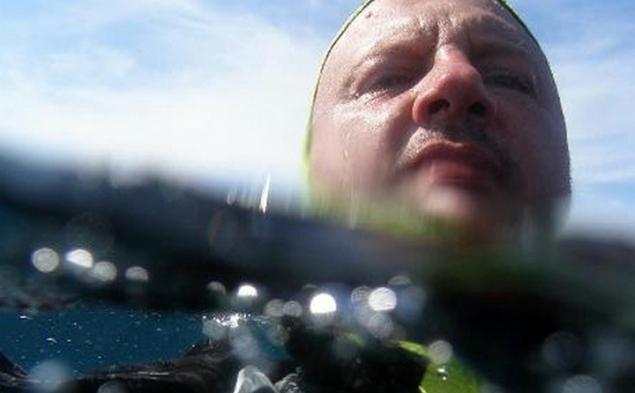
3. American nurses who crossed the Balkans are in the enemy's rear.
In November 1943, a group of 12 American nurses sat on the transport plane in Sicily. They had a short flight to southern Italy, where they were to continue to care for the wounded American soldiers. But the plane was attacked by the Germans and changed course. The pilot was forced to put the machine into uncharted territory. 30 people who were on board, including nurses, have survived, but were shocked when they realized that they shot down the course, and were in the heart of Nazi-occupied Albania.
The team left the plane, knowing that the Nazis would try to capture them. Of nurses was difficult to expect something incredible, but they were cut from the correct test. They took one of the longest passages behind enemy lines in the history of the warrior, fighting alongside local resistance fighters, when the way to the coast, where they hoped to make contact with the Allies.
They walked nearly 1,300 kilometers through enemy territory, rising to more than 2,400-foot mountain during a brutal snowstorm, survived the shelling of the Luftwaffe, and fled the city in minutes before the German forces razed it to the ground. The group eventually came into contact with British intelligence and the Treaty on the evacuation by sea. Of the 30 people who survived the crash, all got to a safe place - a truly amazing feat of survival.

2. King of the Jungle.
During World War II, Herman Perry was part of the American army labor battalion in Burma. The battalion, consisting entirely of African Americans, only officers were white, spent 16 hours a day, breaking rocks under the hot sun, facing the disease, monsoons, leeches and tigers attacks. And when you attack a tiger to seem not the most terrible disaster, things are really bad.
The main problem was that the road they were building, was completely meaningless. She was supposed to be allowed to restock Chinese forces fighting the Japanese, but everyone knew that the war will be over long before it completed. What is even more distressing builder so that for every kilometer of the road accounted for one death.
Perry, by then, had already spent three months in the local military prison for only objection to the Chief. This prison was a terrible place, she was known for her solitary cell with no windows and a metal roof. Thus, when Perry heard that he was going to send there again for what he pretended to be ill, he shot the officer tried to arrest him, and fled.
Surprisingly, Perry met his death in an impenetrable wilderness. Instead, he was admitted to a local tribe of headhunters, and he married the daughter of the leader. With his support, he became a successful hunter and farmer. As rumors of his salvation leaked in a civilized society, he has become a legend among American troops in the area that became known as his "King of the Jungle».
Meanwhile, the US authorities were determined to catch Perry.
11 photo.

10. Robert McLaren removed his appendix in the jungle.
In 1942, Robert "Jock" McLaren escaped from a POW camp in Singapore, fought for a few weeks with the local guerrillas, but was betrayed by a comrade and interned in a strict-regime camps in Borneo.
McLaren during the First World War was still a minor, but it took the cavalry. After the war, he emigrated to Australia and started a quiet life in Queensland. When World War II began, the middle-aged vet was one of the first who volunteered. Captured by the Japanese after the fall of Malaya, McLaren organized his first escape from the infamous Changi Prison (Changi) in Singapore. His return, after the betrayal of his partner, has not changed his intention to run. He teamed up with a man equally determined to escape - local Chinese who McClaren named Johnny Funk, Funk had nothing to lose, as he has repeatedly been subjected to severe torture in Japanese captivity.
Together Jock Johnny escaped from prison and went to the coast. They move from island to island, breaking the 430 kilometers of the Pacific, fighting on the road with the Japanese before landed on the Philippine island of Mindanao. Unfortunately, the island is already captured by the Japanese. And McLaren inflamed appendicitis.
Pursued by Japanese and not being able to get to a doctor, McLaren took the desperate decision. He had a mirror, a sharp pocket knife and vines from the jungle to sew up the wound and absolutely no anesthetic. He had no choice, he had to make a transaction.
The operation took four and a half hours. Several years later, during the presentation of medals for bravery, McLaren asked about the operation. His response was quite brief. "It was horrible," - he said - "but I did all right».
Two days after the operation, McLaren was on his feet again, running away from the Japanese. He spent the remainder of the war as a partisan in the Philippines, commanding huge old boat called "Bastard." He filled mortars and machine guns boat and used it to attack the Japanese ports, and then ran away before anyone had time to understand what happened. Despite the huge reward that was given for his head, he was never caught, probably because everyone was scared of the notorious rebel leader, and deliver him was definitely a death sentence.

9. Doug Scott came down from the mountain on broken legs.
One of the true legends of mountaineering, Doug Scott has made survival impossible conditions in the form of art. In 1975, for example, he and Dugel Heston became the first people who spent the night almost on top of Everest. Everything else, they did it by accident after their ascent took longer than they expected. As a result, by the time it got dark, they had no tents and oxygen and only very light clothing. At night the temperature dropped to -30 degrees Celsius, and Scott and Heston survived, digging a hole in the snow. They have not even got frostbite.
But even that pales in comparison to the incredible descent Scott infamous Pakistani mountain called "Cannibal". In 1977, nearly 25 years after the first conquest of Everest, it appears that no one has yet been able to reach the Pakistani rocky peak at intimidating name of "Maneater". Scott was convinced that he will be the first. The expedition, which he led, was so strapped for cash that they had to hire a guide with disabilities. Nevertheless, on July 13, Scott and his partner Chris Bonington climbed the 250-meter cliff top, which stood at the peak of the Ogre.
Since it was late, they decided to speed up and down on a rope with a rock face. It was a bad decision. When Scott tried to descend on a rope down, a sudden gust of wind hit him on the cliff and broke both his legs. Since there were only broken tibia, Scott was able to get down on the rope rest of the way, using his knees to push off from the cliff.
Fortunately, the pair were soon joined by two other members of the expedition. Unfortunately, they were still at a distance of more than 2000 meters from their base camp. And then a blizzard forced them to hide in a cave for two days, where they ate the last reserves of food. Since mountain landscape deprived of other climbers carry Scott opportunities (especially after Bonington broke two ribs in the fall), he realized that there was only one way to survive - on their own to crawl down the mountain.
He was coming down with one of the highest mountains in the world in seven days, using only his hands and knees. He wiped the four layers of clothing, and his knees were like a bloody mess. He did all this with two broken legs and being hungry, but he was still moving so fast that sometimes overtook the others.
When four climbers reached the territory of their camp, they found it empty - they had not been so long that their team is to assume that they were killed. Scott sent for medical treatment. The helicopter crashed near the hospital, but no surprise that Scott did not get a scratch.

8. Gareth Wood fought with seals in Antarctica.
In 1984, Gareth Wood, Robert Swan and Roger Mir went to the South Pole. They sought to repeat the famous journey to the Pole Robert Falcon Scott. Given that the whole expedition Scott died of starvation, exhaustion and cold on the way back from the pole, it seemed rather odd decision. In addition, only two previous expedition reached the pole on land - Scott and his rival Roald Amundsen.
It is surprising that the journey passed without problems until it was time to go home, that's when the ship collided with the support of lots of ice and could not get to the expedition. The team had to be rescued from ice floes. The ice was quite thin in some places, but it was the lesser of the problems.
Wood later told me that the ice surface at some point if exploded, and a huge seal jaw batted around his feet and began to try and tighten it in ice water through a hole in the ice. Only a layer of ice stood between life and death. Somehow he managed to resist until his companions had not come and started kicking the seal on the head. More seal long refused to release its prey, until defeated, not fallen through the ice. Wood comrades dragged from the edge, but it was not the end ...
Seal again jumped out from under the ice, sank his teeth into the same leg, and it all started again.
Wood can consider yourself lucky, because in the end he still was able to get away from the seal. A similar incident was repeated in 2003, when the seal was trying to tighten the British biologist under water. This is the first, after Wood recorded instance attempts seal kill a man.

7. British climber sailed through the avalanche.
In early 2013 three British amateur climber to enjoy the journey to the famous Mont Blanc in the Italian Alps. Mont Blanc is known for its frequent avalanches that make a mountain one of the most deadly in the world - 100 climbers and hikers die on it every year. When the three Britons down the Aiguille di Bionnassay, behind me they heard the roar of impending doom.
Two climbers, Misha Gopaula and Ben Tibbetts, managed to get to a safe place. But the third climber, who asked that the media not to be named, was hit by a wave of snow and ice. Desperate, the climber did the only thing that came into his head - he swam.
More than 700 meters he swam in an avalanche while she carried him down the mountainside. Of course, it is technically impossible to swim in the snow, but broad, circular motion to keep him on the surface. When the avalanche stopped, he was able to get out from under the snow without help and get to a safe place.
He sailed through the avalanche and left without a scratch, but his modesty does not allow us to know the name of this hero.

6. Stuck Emile Leray built a motorcycle from his car.
In 1993, a French adventurer Emile Leray traveled the Sahara on your car Citroen 2CV, when he was stopped at a military checkpoint. Soldiers told Leray about battles in the area and did not allow him to continue his journey. If you think so, it is initially clear that the person who decided to go to the Sahara on small cars are not very friendly with the head, and therefore Leray, ignoring military advice, decided to go further.
To get around the checkpoint, he just left the road and drove through the desert with the intention of returning to the newcomers part where the soldiers could not see it. The plan may be triggered if Citroen ran into a stone that turned the car into a useless pile of metal. One middle of the desert, without transport and method to call for help, Leray was trapped his confidence.
But Leray, examining his car, discovered that his engine is still running. And he decided that if he can not use it to restore Citroen to life, he must build something that could save his life. So Emile Leray decided to build a bike from his crashed car.

In any case, it is more complicated than it seems at first glance. Leray was only a standard set of automotive tools and hacksaw. He began to disassemble the Citroen and create parts of the motorcycle. It took him 12 days of constant work at high temperature of the Sahara, 12 days of desperate fear, uncertainty and thirst, but eventually Emile Leray left the desert on a motorcycle, which he built himself.

5. Du Plessis Davey escaped mugging on Amazon.
In 2012, 24-year-old South African Davy du Plessis was in a six-month trip to the Amazon. His goal was to become the youngest person to travel to alone along the river from its source to the sea. Du Plessis knew it could be a dangerous journey: he had never sailed on a folding kayak, but the first three months have been pretty good. Du Plessis biked 800 kilometers along the river and swam to the kayak has 1,100 km.
August 25 du Plessis has floated down the river, when he saw the first manatee. River dolphins frolicking near the kayak. A little later, he met two men in a motorized canoe, but did not attach much importance. These meetings were very common on the river. A few minutes later he felt a stab in the back, acute pain and was under water. When he tried to swim to the surface, he found that his hands do not work.
Desperate for air, he used his legs to emerge, but as soon as his head emerged from the water, he felt a blow in the face. He managed to get out on the river. Then in the third bullet hit him, and he realized that someone shoots him.
Anyway du Plessis found strength to escape. He ran 5 kilometers through the jungle until he was safe. Then he walked a few kilometers down the river in hopes of finding help. All his property along with kayak was lost.
When he finally saw two local residents, he was too weak to even whistle, drawing attention to himself. The bullets hit his heart and hit the lungs. His carotid artery was almost completely severed, and he almost choked with their own blood.
Poor locals could not afford to take him to the closest town, so he moved from village to village, stubbornly clinging to life for days. When he finally got to the hospital, the doctors refused to examine him until his family was not able to confirm that they can pay. But du Plessis said the kindness of local residents, he encountered on Amazon, gave him the strength to survive and fully recover.

4. Peter Treyhern is the unluckiest and the luckiest man alive.
In 2006, Peter and his partner Treyhern dive Tozio Jeff jumped out of the boat at the rock Pimpernel. Toothed underwater spire was home to dozens of giant gray sharks. Treyhern was keen underwater photographer, and spent the whole day taking pictures of breathtaking underwater scenery. When it has emerged in the last time, the boat was not. Two men were in the midst of an empty ocean.
Anchor chain broke, and the boat swept over until Treyhern and Tozio were under water. Men spent four hours trying to stay afloat and holding on to each other as they pulled over next to the sea. To kill time, Treyhern was filming.
The ocean gets hectic, but a miracle happened. Sailing past the tanker noticed men and informed the police, who sent a boat to rescue divers. It seemed that their trials are over, but the police boat on the way to the shore, capsized, and the two were back in the ocean.
This time Treyhern lost my camera, trying to stay afloat. Fortunately he Tozio, along with a police team, were saved for the second time and taken ashore.
Being lost at sea and saved twice in one day, Treyhern apparently thought that spent his entire fortune. But four years later, a man walking a dog on the beach, found a strange object lying in the sand. It was a camera Treyherna, broken, but rabotsposobnym information carrier. The pictures came out great.

3. American nurses who crossed the Balkans are in the enemy's rear.
In November 1943, a group of 12 American nurses sat on the transport plane in Sicily. They had a short flight to southern Italy, where they were to continue to care for the wounded American soldiers. But the plane was attacked by the Germans and changed course. The pilot was forced to put the machine into uncharted territory. 30 people who were on board, including nurses, have survived, but were shocked when they realized that they shot down the course, and were in the heart of Nazi-occupied Albania.
The team left the plane, knowing that the Nazis would try to capture them. Of nurses was difficult to expect something incredible, but they were cut from the correct test. They took one of the longest passages behind enemy lines in the history of the warrior, fighting alongside local resistance fighters, when the way to the coast, where they hoped to make contact with the Allies.
They walked nearly 1,300 kilometers through enemy territory, rising to more than 2,400-foot mountain during a brutal snowstorm, survived the shelling of the Luftwaffe, and fled the city in minutes before the German forces razed it to the ground. The group eventually came into contact with British intelligence and the Treaty on the evacuation by sea. Of the 30 people who survived the crash, all got to a safe place - a truly amazing feat of survival.

2. King of the Jungle.
During World War II, Herman Perry was part of the American army labor battalion in Burma. The battalion, consisting entirely of African Americans, only officers were white, spent 16 hours a day, breaking rocks under the hot sun, facing the disease, monsoons, leeches and tigers attacks. And when you attack a tiger to seem not the most terrible disaster, things are really bad.
The main problem was that the road they were building, was completely meaningless. She was supposed to be allowed to restock Chinese forces fighting the Japanese, but everyone knew that the war will be over long before it completed. What is even more distressing builder so that for every kilometer of the road accounted for one death.
Perry, by then, had already spent three months in the local military prison for only objection to the Chief. This prison was a terrible place, she was known for her solitary cell with no windows and a metal roof. Thus, when Perry heard that he was going to send there again for what he pretended to be ill, he shot the officer tried to arrest him, and fled.
Surprisingly, Perry met his death in an impenetrable wilderness. Instead, he was admitted to a local tribe of headhunters, and he married the daughter of the leader. With his support, he became a successful hunter and farmer. As rumors of his salvation leaked in a civilized society, he has become a legend among American troops in the area that became known as his "King of the Jungle».
Meanwhile, the US authorities were determined to catch Perry.
